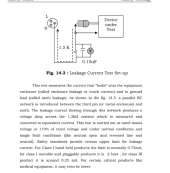Hi. I have two growatt 5000es hybrid inverters connected in parallel. All connections are correct as per instructions:
For each inverter:
AC input: 230v L and N and ground
Ac output: 230 v L and N and ground
So ground of input and output are connected to same ground wire.
PV input: 300V array to each inverter connected to PV+ and PV -
Everything is running as it should (no problems with parallel operation of the two inverters (they share the load...etc..)
However, I was working on the DC breaker between PV and the inverter and I got an electric shock! It was at night so no PV voltage. I tested the PV input of the inverter and both PV + and PV - (of both inverters) have 230 volts AC on them! (Test screw driver lights up and also by multimeter I measured 23O volts AC between PV + and ground and between PV - and ground. So both PV + and PV - have the same 230V AC on them. I am sure this voltage is coming from the inverters and not the PV panels because the DC breakers are off (and no voltage measured at PV side. Only at inverter side.).
This seems very serious. Is this normal?? If so, isn't this bad for the PV panels? (Feeding AC into the panels) Also it seems like a major safely concern.
If only one inverter was behaving like this I would suspect a malfunction but since both are doing it, I am wondering if this is normal.
Please let me know if this is normal.
Thank you very much.
For each inverter:
AC input: 230v L and N and ground
Ac output: 230 v L and N and ground
So ground of input and output are connected to same ground wire.
PV input: 300V array to each inverter connected to PV+ and PV -
Everything is running as it should (no problems with parallel operation of the two inverters (they share the load...etc..)
However, I was working on the DC breaker between PV and the inverter and I got an electric shock! It was at night so no PV voltage. I tested the PV input of the inverter and both PV + and PV - (of both inverters) have 230 volts AC on them! (Test screw driver lights up and also by multimeter I measured 23O volts AC between PV + and ground and between PV - and ground. So both PV + and PV - have the same 230V AC on them. I am sure this voltage is coming from the inverters and not the PV panels because the DC breakers are off (and no voltage measured at PV side. Only at inverter side.).
This seems very serious. Is this normal?? If so, isn't this bad for the PV panels? (Feeding AC into the panels) Also it seems like a major safely concern.
If only one inverter was behaving like this I would suspect a malfunction but since both are doing it, I am wondering if this is normal.
Please let me know if this is normal.
Thank you very much.



